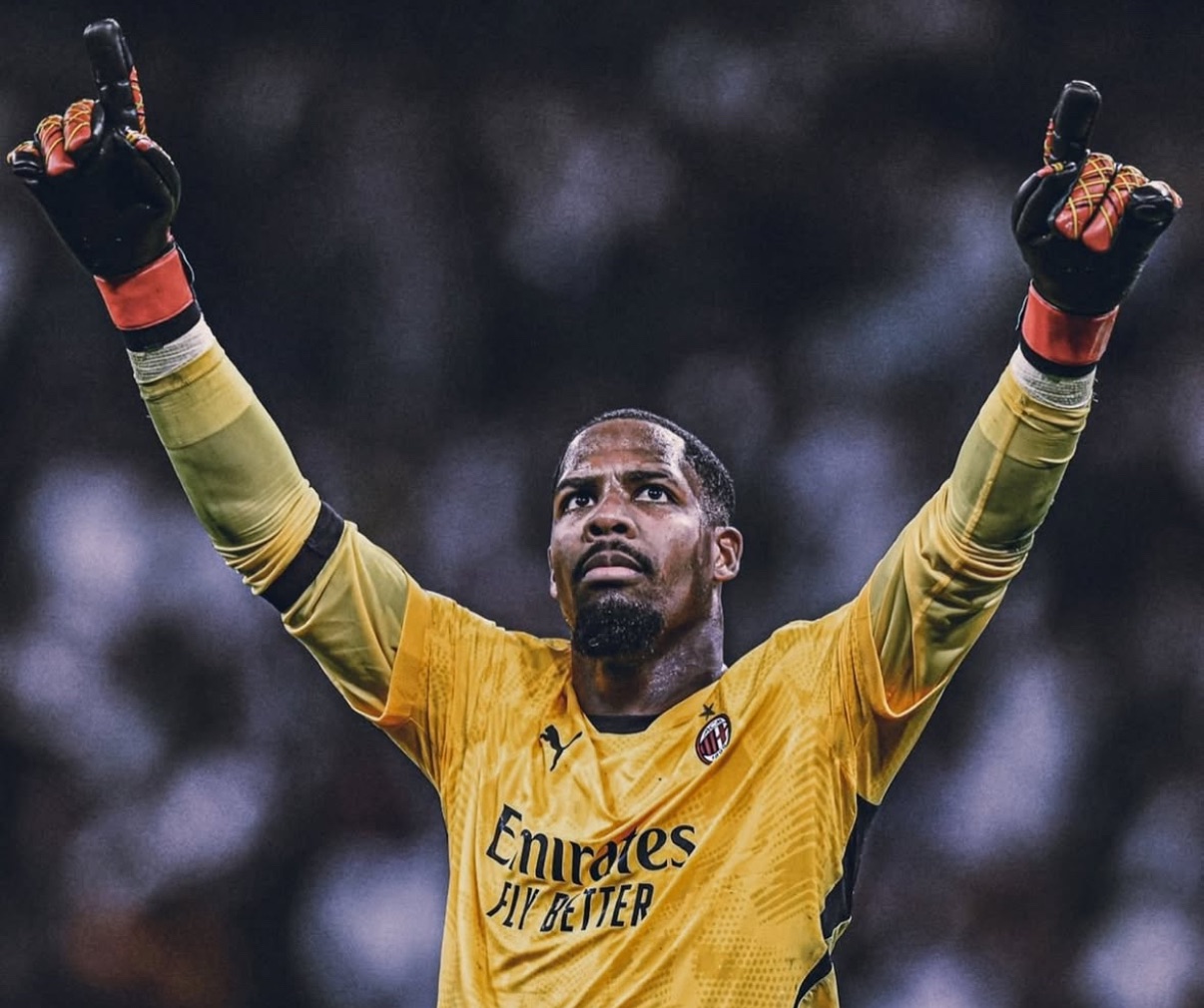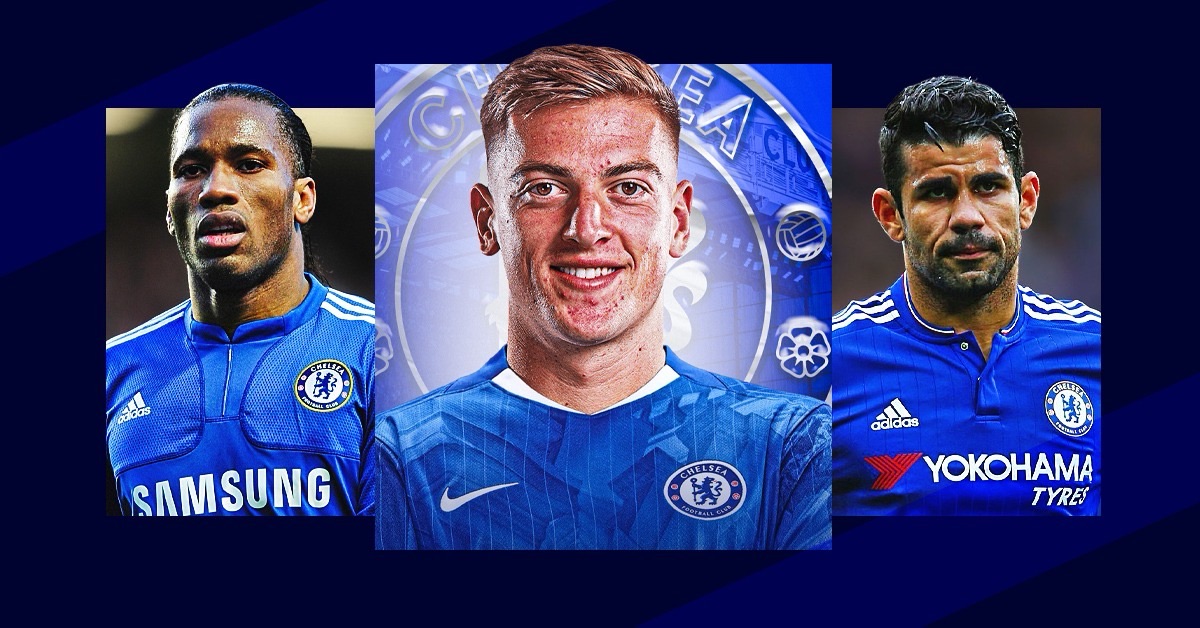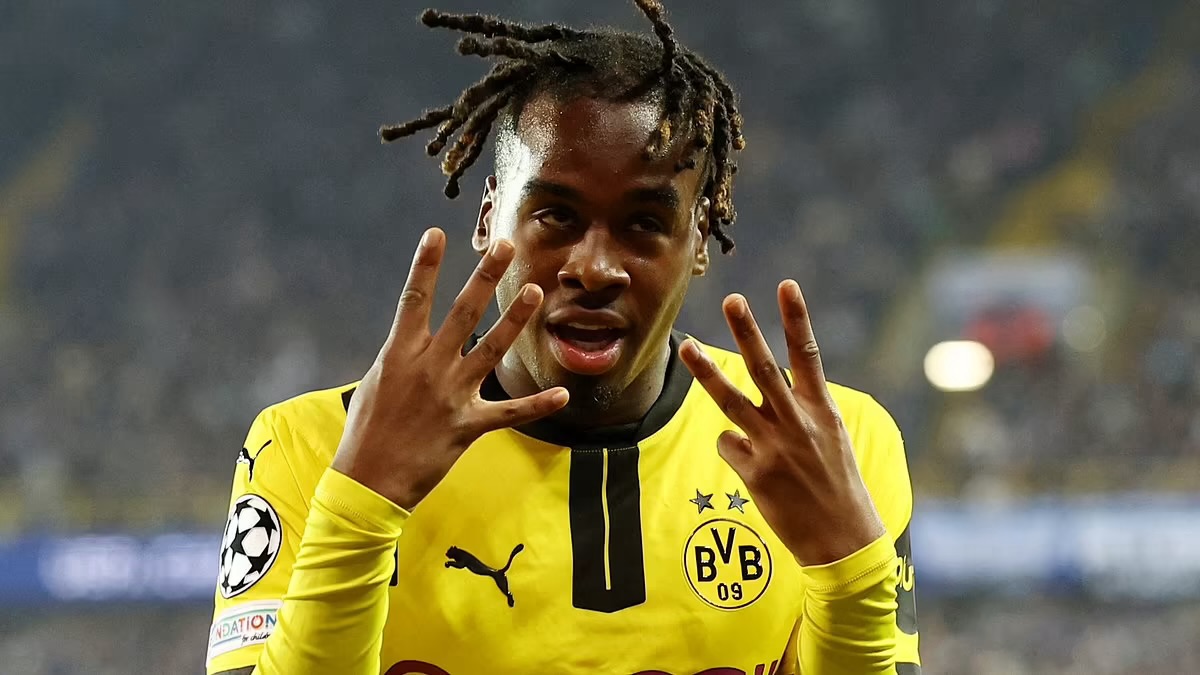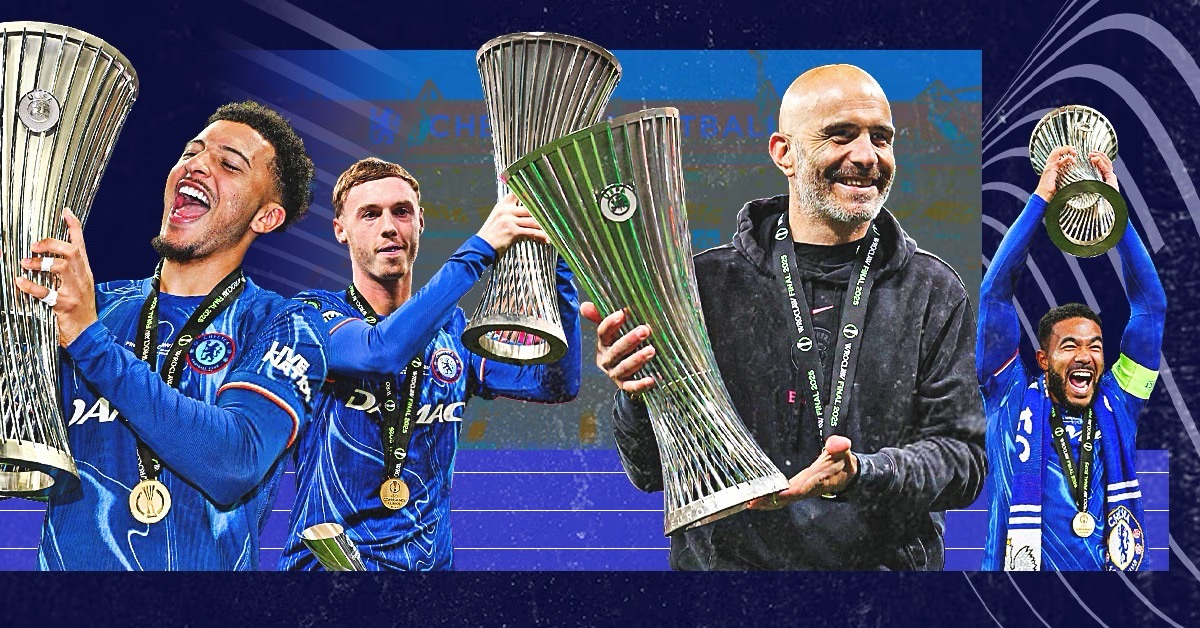With the final touches being put on the Enzo Maresca Chelsea appointment, I wanted to write an article that shows you what to expect on a tactical basis from Maresca, and how it could work at Chelsea.
Key Philosophy and Principles:
The absolute pinnacle idea of Maresca’s is to dominate the ball with a slower and intricate style of play, starting with deeper build up patterns and an obsession with control.
This comes as no surprise being a “Guardiola disciple” and being someone who fell in love with this way of playing the game.
Maresca wants his side to “play in traffic” and “occupy the right spaces” two very key quotes that can be heard in the italians masterclass video for TheCoaches‘ Voice, and in many of his interviews.
This insistence to play out from the back, progress the ball at a slower tempo and control the game is exactly why Chelsea have picked Maresca.
Maresca’s style suits the squad being built by the owners and sporting directors.
Don’t believe me yet? let’s take a look :
Build up shape:


Image one shows Maresca’s team “on paper” in a 4-3-3, whilst Image two shows how things tend to rotate in build up creating this 3-2-5 shape.
Maresca’s main idea in possession is to invert one of his fullbacks (typically this has been the right-back this season, Ricardo Pereira).
This leads to the left back becoming more of a LCB (left centre back) in possession, creating a back three in the base, with the inverted fullback and number six (Harry Winks) creating the midfield two.

Something else important in build up for Maresca is the usage of his goalkeeper, often stepping up to form a back four with the three defenders at the base of build up.
In the image above, you can see how the two wider centre backs in possession (Faes and Doyle) stretch to become “nominal” fullbacks, whilst the central defender in possession (Vestergaard) sits alongside the goalkeeper to form this back four.
The pivot sits in front of this four (notice the distance between the pivot), looking to circulate the ball, and find third man passing combinations with one another OR find passes between the lines into the number eights.
These eights are usually key receivers between the lines for Maresca’s side.

The importance of number eights:
This leads us onto the importance of the number eights, and their responsibilities as receivers for the side.
As we spoke about with build up, Maresca wants his side to control possession, circulate the ball at a slower tempo and progress through the pitch as a unit.
Whether this starts with the 4-2 base (Goalkeeper included) or the 3-2 base ( three defenders and two man pivot) the role of the number eight remains the same, occupy the right space and create passing angles to progress through the lines.

The image above is a brilliant example of how Maresca’s Leicester side manipulated the opposition press, to find space for the eights to receive and kick start attacks.
As you can see, the 3-2 base is narrow (this is important) because it draws bodies infield to make the centre compact to play through.
However, the height of the wingers (another important factor we will touch on later) provides these little pockets for the eights to drop into allowing them to occupy the “right space” for their teammates.
The willingness for Maresca’s side to “play in traffic” as we said earlier is due to these narrow build up patterns between the base five or six players.
This is created to entice the opposition to press, allowing you to find the gaps and passing lanes to progress the ball forward into the space provided.
From this the main takeaways are, the inverted fullback and number six should be extremely press resistant, have a good level of “pausa” to draw the press, and be comfortable taking the ball under pressure (in traffic).
The eights however have to be slightly more dynamic, knowing where to move to occupy the right space, and knowing when to make runs into the attacking third to drag players away with them (again big enthuses on creating space for themselves AND others when playing as an eight in this system).

From this image you can see the wide centre back (left side) has dropped into the pocket of space between the “nominal” fullback position and the winger.
Therefore this is the moment for the eight to make a central run to either receive in and around zone 14 (a central zone just in front of the 18 yard box) or make a run in behind to stretch the pitch for his team.
Box crashing… that’s another element of playing as a number eight in this system, as whether its coming from blind side runs past the winger, or flooding the box for half space crosses, these eights are there to add numbers in the box.
This was seen with Dewsbury-Hall’s influence this season, scoring 12 goals, and providing 15 assists in all competitions.
Final Third Patterns:
The key functions for Maresca’s attacking patterns are firstly to have high and wide wingers.

The wingers have the responsibility to pin the opposition fullbacks, creating width and depth to expand the pitch.
The idea is for them to stay high and wide, opening space in central areas for others to play, whilst being viable outlets when attacking.
Their positioning will often allow them to find 1v1 isolations with the opposition fullback, giving them the chance to beat their man and put a ball into the box, or even cut inside and shoot.
Overload to isolate is another key term used to describe how Leicester would form attacks.
Overloading one side of the pitch, playing shorter passing combinations until they baited the press, which then allowed them to play through with minimal passes and find the isolated man on the opposite side of the pitch (in space).
As we also spoke about, the number eights role is to offer as a receiver between the lines, but also make runs into the box from in and around that zone 14 area (as we mentioned earlier).
The striker has differing roles in this system, as at times they need to get in the box, make those blind side runs, and stretch the play.
However at times, if Maresca’s side is being outnumbered in the middle of the pitch, he is willing to drop his striker Into this area to create an overload, with the wingers then operating further forward to pin the opposition defenders as we mentioned earlier.

One more key attacking pattern to watch out for with Maresca’s side is “half space crosses”.
These tend to come against lower block defences, but when one of the eights, one of the pivot players or even one of the wider centre backs get on the ball in these areas, they put balls into the box.
The aim is for the striker, back post winger, and number eights to crash the box to score.
This was a key feature for his Leicester side last campaign against low blocks.
Defensive structure / pressing :


Maresca’s Leicester side tend to press in a 4-1-4-1, which can also look like a 4-4-2 at times with one of the 8’s pressing as a second forward.
Whilst Maresca’s main defensive principles are to counter press when they lose the ball, and go man for man in an aggressive manner to retrieve the ball so they can continue to control the game.
He can be selective when they go aggressive, and when they wait for the pressing trigger.
It is important for his defenders to have high levels of footballing IQ, as once the press is triggered, it is super aggressive.

Centre backs will follow their man into midfield areas, and others have to have the understanding to cover that man who has pressed out of the structure.
Often last season Leicester were caught on the counter, not particularly having the fastest set of recovery defenders for this style of Football.
However, they still posted the best defensive record in the division, conceding only 27 goals from open play (41 in total), and conceding the second least shots per game at 10.6 (Leeds conceding the least with 9.2 per game).
Usually one of the eights (Ndidi or Dewsbury-Hall) would trigger the press by jumping out of the line of four, to press alongside the striker (looking like more of a 4-4-2 now), which would then kick start the aggressive man for man pressure from each and every player.

One last important thing to note is the defensive responsibility of the right winger (Fatuwu in this case) as with the right back being the natural inverter for the team.
This winger often has to track back with the opposition fullback to stop overloads down this side, and can even end up forming a 5-4-1 at times due to the defensive responsibility sometimes required.
How COULD Maresca shape up at Chelsea?:


Taking everything we have spoken about into account, this is the squad I have landed on.
Please take into account this is without any transfers, and its not to say i dont think some players not in this starting XI won’t have massive futures under Maresca, but this is how i think he will start things off.
Starting with the goalkeeper, I believe Maresca and the directors will be targeting an addition in this area.
The need for his goalkeeper to step up and circulate possession, and be comfortable on the ball is something this squad currently lacks.
Marc Cucurella would be a perfect option for that left back / left centre back hybrid role, having played this previously at Brighton before his move to Chelsea.
He also has the ability to invert from the left into midfield (as seen last season under Poch) showing his versatility to suit roles Maresca requires.
This is an area however I believe we could see an addition, as Ben Chilwell certainly doesn’t suit this type of football (unless he’s a width provider which does not tend to be the case in Maresca’s set ups).
Levi Colwill starting as the left centre back “on paper” but becoming the central centre back in build up would be perfect for his skill set.
His ability to break the lines through a multitude of passing angles, and increased responsibility on the ball, give him the keys in that backline.
And Wesley Fofana is exactly what you want for a wide centre back in Maresca’s system, starting as the right centre back and staying as the right centre back in possession too.
If possession is lost he is the perfect recovery defender, with a mix of pace and athleticism, he is a unicorn type defender.
He is also very good on the ball too, the only issue is keeping him fit (therefore don’t be surprised to see an addition here if Chalobah is sold too!).
At right back i’m going to mention them both because I think they can both thrive in this role, Reece James and Malo Gusto.
Whichever one of them starts this right back position, inverting into midfield, they have the skillset to do it at the highest level.
Technical quality to spend extended time on the ball under pressure, press resistance, and both offer that athleticism/defending prowess alongside the second pivot player (who shall be named in a moment).
I agree that they both have excellent ability when attacking the byline and delivering crosses (and there is nothing to say we don’t see tactical innovation from Maresca to still allow this…) but if he sticks with his roots, both Reece and Malo would be brilliant in this role.
Now for the other pivot player, starting as the lone six but very much covered by his fullbacks and box to box midfielders.
Harry Winks played this role for Leicester, being their “100 touch man” and knitting things together. This is where you want Enzo Fernandez to unlock the best of him.
This would see Caicedo playing as a box to box midfielder as one of the number eights, which I believe he can do to a brilliant level.
However, it is important to mention we could see many variations, with Caicedo deeper and Enzo higher, or even both forming the pivot and a fullback instead providing width (if Maresca so chooses to tweak).
Enzo being the progressive passer from deep, knitting play together with his high footballing IQ and passing ability, mixed with the box to box movement of Caicedo receiving between the lines, and having the freedom to counter press and press all over the pitch, could see the best form out of both the £100m pound men.
The other number eight role would be occupied by Palmer in my opinion, in that Dewsbury Hall role as the more attacking 8.
His ability to receive between the lines, manipulation of the ball and space, and his ability to attack the box and score goals/get assists make him perfect for this role.
Dewsbury Hall scored 12 goals, and provided 15 assists in all competitions from this position, and I believe Cole Palmer could thrive here.
That leaves us with the two wingers and striker, for me the two wingers would be Noni Madueke and Christopher Nkunku (let me explain in regards to Nkunku).
Firstly Madueke I can see becoming a real favourite of Maresca’s, as he is everything he wants in his winger.
Madueke will stay high and wide in possession to pin opposition, always wants the ball in 1v1 scenarios and isn’t afraid to beat his man and make something happen.
He is direct on the ball, and Maresca is a coach who encourages this attribute.
I can also see the defensive improvements Madueke made under Pochettino being a key factor for Noni being in the side, as usually this right sided winger has to be slightly more defensively aware (as mentioned earlier due to the right back inverting).
Now let’s speak about Nkunku, who I do believe his best position is more central.
However I also regard him as one of the most tactically flexible pieces in Chelsea’s toolkit, allowing him to play this role effectively.
Cutting inside on his right foot from 1v1 isolations, making back posts runs into the box with smart movement, and being so technically astute with his first touch and ability to put himself between the opponent and ball would see him as a very secure outlet for the team.
I can see him working as a striker too under Maresca, and I could even see his best position possibly being an attacking eight (as Palmer is),
But, I would rather Palmer in that role due to the tactical flexibility of Nkunku as I mentioned, and I’m excited to see how Maresca profiles him particularly.
Lastly Nicolas Jackson, now again we could very well see a striker introduction this summer, but I was very happy with Jackson’s debut season and believe he has all the tools to be a complete centre forward.
He can drop deep when needed, make clever runs to drag the opposition defenders away, is good with the ball at his feet, and a good progressive carrier and dribbler.
However, a box dominant striker (particularly for facing low blocks) is what the squad currently lacks, and I believe whether that’s Osimhen or someone else this summer, it is an area that can be addressed to improve the squad overall.
Conclusion:
To conclude this article there is a lot to be excited about, the tactical fit is perfect for this group of Chelsea players and it’s the way the squad has been being built for a while now.
Many players I haven’t mentioned such as Chukwuemeka, Lavia, Mudryk, Badiashile, Gallagher (if not sold) and Chalobah (again if not sold) could have big roles in this team too, and I am not disregarding anyone in that sense.
As I said, a lot to be excited about, the main concerns will come with the lack of experience coaching at this level, and dealing with the scrutiny when it comes, which it absolutely will during stages of a long season ahead for Chelsea.





